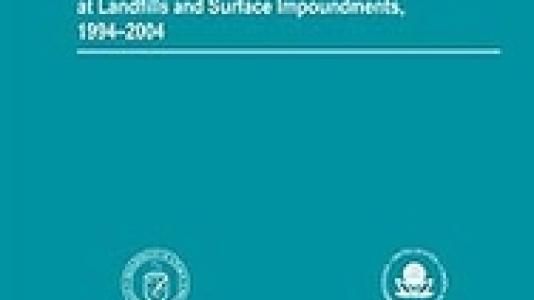
ARGONNE, Ill. — A new report prepared by the Environmental Science Division at Argonne National Laboratory has the potential for far-reaching impacts on the electric utility industry. It concludes there has been improved management of coal combustion wastes (CCWs) in landfills and surface impoundments over the past decade.
Based on the new report, the U.S. Environmental Protection Agency (EPA) is expected to reassess its previously issued determination regarding the need for national regulations to manage CCWs generated by electric utilities. The report serves as the cornerstone of an upcoming notice of data availability through which EPA will make this new information available to the public.
In 2000, the EPA determined that a need existed for national regulations to address CCW disposal in landfills and surface impoundments as nonhazardous waste under Subtitle D of the Resource Conservation and Recovery Act. This determination was based on management practices and state regulations in effect prior to 1995.
The U.S. Department of Energy (DOE) suspected that after 1995, CCW management practices and state regulations had improved enough that environmental exposures were mitigated, minimized or possibly eliminated. DOE officials were concerned that stricter federal standards, which states would be required to implement, could increase energy costs for consumers without corresponding improvements in human health or environmental quality. As a result, DOE and the EPA agreed to have Argonne researchers study recent and current CCW management practices.
The resulting joint Department of Energy-EPA report, Coal Combustion Waste Management at Landfills and Surface Impoundments, 1994-2004, documents the findings of that study. Three areas of interest were addressed:
- Recent and current industrial management practices for disposal of CCWs in surface impoundments and landfills,
- State regulatory requirements for CCW management, and
- Implementation of state requirements (i.e., the extent to which states grant or deny operator requests for variances from regulatory requirements and the rationale for doing so).
“The study is unique in that it included wide input from non-government organizations, industry and states, as well as the EPA and the Department of Energy,” said Debbie Elcock of Argonne’s Environmental Science Division. Elcock was the study’s principal investigator.
The report findings were based on the compilation and analysis of raw data for 56 disposal units collected by the utilities’ largest trade association and by the EPA; the search, compilation and analysis of regulatory requirements in 11 states with high coal combustion rates; and a review and verification of 65 permits covering CCW disposal units in 16 states. The study produced the following key findings:
- Disposal management practices and the enforcement of state requirements have resulted in liners for virtually all newly built or expanded units (97 percent of landfills and 100 percent of surface impoundments) and groundwater monitoring for the majority of such units (97 percent of landfills and nearly 80 percent of surface impoundments).
- Between the time when data were collected for the 1988 report to Congress and the time of this study, a majority of the 11 states reviewed tightened regulation of landfill liners, leachate-collection systems and groundwater monitoring.
- A detailed analysis of variance requests in 65 permits in 16 states indicates that state regulators have not issued variances without a sound scientific basis supporting the request.
The report is available online.